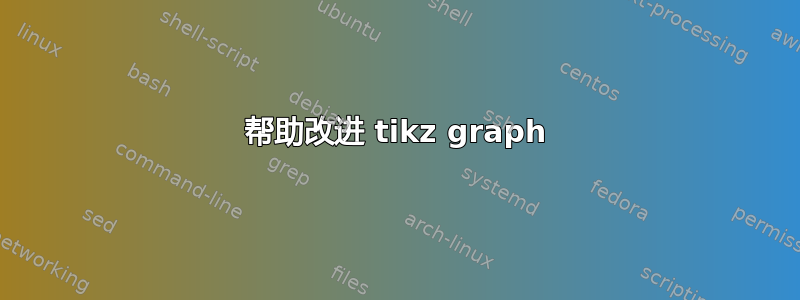
\documentclass{beamer}
\mode<presentation>
{
\usetheme[secheader]{Madrid}
\useoutertheme{Smoothbars}
\usefonttheme[onlylarge]{structurebold}
\setbeamerfont*{frametitle}{size=\normalsize,series=\bfseries}
\usefonttheme{professionalfonts}
}
\subject{...}
\AtBeginSubsection[]
{
\begin{frame}<beamer>
\frametitle{Plan wyk?du}
\tableofcontents[currentsection,currentsubsection]
\end{frame}
}
\newtheorem{thm}{Theorem}[section]
\setbeamertemplate{theorem begin}
{%
\par\vskip\medskipamount%
\begin{beamercolorbox}[colsep*=.75ex]{block title}
\usebeamerfont*{block title}%
\inserttheoremname
\ifx\inserttheoremaddition\empty\else\ (\inserttheoremaddition)\fi%
\end{beamercolorbox}%
{\parskip0pt\par}%
\ifbeamercolorempty[bg]{block title}
{}
{\ifbeamercolorempty[bg]{block body}{}{\nointerlineskip\vskip-0.5pt}}%
\usebeamerfont{block body}%
\vskip-.25ex\vbox{}%
}
\setbeamertemplate{theorem end}{}
\usepackage{lipsum}
\usepackage{mathrsfs,amsmath}
\usepackage{mathrsfs}
\usepackage{hyperref}
\usepackage[english]{babel}
\usepackage{times}
\usepackage[T1]{fontenc}
\usepackage{amsmath}
\usepackage{amssymb}
\usepackage[T1]{fontenc}
\usepackage{amsthm}
\usepackage{graphicx}
\usepackage{pdflscape}
\theoremstyle{definition}
\newtheorem{defn}{Definition}[section]
\theoremstyle{remark}
\theoremstyle{plain}
\newtheorem{lem}[thm]{Lemma}
\newtheorem{cor}[thm]{Corollary}
\newtheorem{rmk}[thm]{Remark}
\newtheorem{prop}[thm]{Proposition}
\newtheorem{conj}[thm]{Conjecture}
\renewcommand{\thethm}{\thesection.\arabic{thm}}
\renewcommand{\thelem}{\thesection.\arabic{lem}}
\renewcommand{\thecor}{\thesection.\arabic{cor}}
\renewcommand{\thermk}{\thesection.\arabic{rmk}}
\renewcommand{\theprop}{\thesection.\arabic{prop}}
\renewcommand{\theconj}{\thesection.\arabic{conj}}
\renewcommand{\theequation}{\thesection.\arabic{equation}}
\renewcommand{\thefootnote}{\fnsymbol{footnote}}
\usepackage{verbatim}
\usepackage{
%graphicx,
caption,subcaption}
\newcommand{\noi}{\noindent}
\allowdisplaybreaks
\usepackage{tikz}
%\usepackage{xcolor}
\usetikzlibrary{intersections,arrows.meta,automata,er,calc,backgrounds,mindmap,folding,patterns,decorations.markings,fit,
%snakes,
shapes,matrix,positioning,shapes.geometric,through,arrows,decorations}
\newcommand{\vertex}{\node[vertex]}
\newcounter{Angle}
\definecolor{myblue}{rgb}{24,40,120}
\begin{document}
\begin{frame}
\begin{tikzpicture}[scale=0.35]
\tikzstyle{every node}= [shape=circle, draw,
minimum size=2.4em, inner sep=2pt
]
\node (v0) [fill=brown] at (0:9) {$V_0$};
\node (v1) [fill=red] at (18:9) {$V_1$};
\node (v2) [fill=magenta] at (2*18:9) {$V_2$};
\node (v3) [fill=blue] at (3*18:9) {$V_3$};
\node (v4) [fill=brown] at (4*18:9) {$V_4$};
\node (v5) [fill=green] at (5*18:9) {$V_5$};
\node (v6) [fill=magenta] at (6*18:9) {$V_6$};
\node (v7) [fill=brown] at (7*18:9) {$V_7$};
\node (v8) [fill=teal] at (8*18:9) {$V_8$};
\node (v9) [fill=magenta] at (9*18:9) {$V_9$};
\node (v10) [fill=pink] at (10*18:9) {$V_{10}$};
\node (v11) [fill=blue] at (11*18:9) {$V_{11}$};
\node (v12) [fill=olive] at (12*18:9) {$V_{12}$};
\node (v13) [fill=green] at (13*18:9) {$V_{13}$};
\node (v14) [fill=pink] at (14*18:9) {$V_{14}$};
\node (v15) [fill=red] at (15*18:9) {$V_{15}$};
\node (v16) [fill=blue] at (16*18:9) {$V_{16}$};
\node (v17) [fill=green] at (17*18:9) {$V_{17}$};
\node (v18) [fill=red] at (18*18:9) {$V_{18}$};
\node (v19) [fill=olive] at (19*18:9) {$V_{19}$};
\node (v20) [fill=teal] at (0,0) {$V_{20}$};
\draw (v0) -- (v1)
(v1) -- (v2)
(v2) -- (v3)
(v3) --(v4)
(v4) --(v5)
(v5) --(v6)
(v6) --(v7)
(v7) -- (v8)
(v8) -- (v9)
(v9) -- (v10)
(v10) --(v11)
(v11) --(v12)
(v12) --(v13)
(v13) --(v14)
(v14) --(v15)
(v15) --(v16)
(v16) --(v17)
(v17) --(v18)
(v17) --(v18)
(v18) --(v19)
(v19) --(v0)
(v20) --(v10)
(v20) --(v11)
(v20) --(v12)
(v20) --(v13)
(v20) --(v14)
(v20) --(v15)
(v20) --(v16)
(v20) --(v17)
(v20) --(v18)
(v20) --(v19);
\end{tikzpicture}
\end{frame}
\end{document}
答案1
你能解释一下你想要实现什么吗?“更好”可以有很多含义。我猜你不希望节点重叠,至少我会称之为“更好”。
\documentclass{beamer}
\mode<presentation>
{
\usetheme[secheader]{Madrid}
% \useoutertheme{Smoothbars}
\usefonttheme[onlylarge]{structurebold}
\setbeamerfont*{frametitle}{size=\normalsize,series=\bfseries}
\usefonttheme{professionalfonts}
}
\subject{...}
\AtBeginSubsection[]
{
\begin{frame}<beamer>
\frametitle{Plan wyk?du}
\tableofcontents[currentsection,currentsubsection]
\end{frame}
}
\newtheorem{thm}{Theorem}[section]
\setbeamertemplate{theorem begin}
{%
\par\vskip\medskipamount%
\begin{beamercolorbox}[colsep*=.75ex]{block title}
\usebeamerfont*{block title}%
\inserttheoremname
\ifx\inserttheoremaddition\empty\else\ (\inserttheoremaddition)\fi%
\end{beamercolorbox}%
{\parskip0pt\par}%
\ifbeamercolorempty[bg]{block title}
{}
{\ifbeamercolorempty[bg]{block body}{}{\nointerlineskip\vskip-0.5pt}}%
\usebeamerfont{block body}%
\vskip-.25ex\vbox{}%
}
\setbeamertemplate{theorem end}{}
\usepackage{lipsum}
\usepackage{mathrsfs,amsmath}
\usepackage{mathrsfs}
\usepackage{hyperref}
\usepackage[english]{babel}
\usepackage{times}
\usepackage[T1]{fontenc}
\usepackage{amsmath}
\usepackage{amssymb}
\usepackage[T1]{fontenc}
\usepackage{amsthm}
\usepackage{graphicx}
\usepackage{pdflscape}
\theoremstyle{definition}
\newtheorem{defn}{Definition}[section]
\theoremstyle{remark}
\theoremstyle{plain}
\newtheorem{lem}[thm]{Lemma}
\newtheorem{cor}[thm]{Corollary}
\newtheorem{rmk}[thm]{Remark}
\newtheorem{prop}[thm]{Proposition}
\newtheorem{conj}[thm]{Conjecture}
\renewcommand{\thethm}{\thesection.\arabic{thm}}
\renewcommand{\thelem}{\thesection.\arabic{lem}}
\renewcommand{\thecor}{\thesection.\arabic{cor}}
\renewcommand{\thermk}{\thesection.\arabic{rmk}}
\renewcommand{\theprop}{\thesection.\arabic{prop}}
\renewcommand{\theconj}{\thesection.\arabic{conj}}
\renewcommand{\theequation}{\thesection.\arabic{equation}}
\renewcommand{\thefootnote}{\fnsymbol{footnote}}
\usepackage{verbatim}
\usepackage{
%graphicx,
caption,subcaption}
\newcommand{\noi}{\noindent}
\allowdisplaybreaks
\usepackage{tikz}
%\usepackage{xcolor}
\usetikzlibrary{intersections,arrows.meta,automata,er,calc,backgrounds,mindmap,folding,patterns,decorations.markings,fit,
%snakes,
shapes,matrix,positioning,shapes.geometric,through,arrows,decorations}
\newcommand{\vertex}{\node[vertex]}
\newcounter{Angle}
\definecolor{myblue}{rgb}{24,40,120}
\begin{document}
\begin{frame}
\begin{tikzpicture}[scale=0.35]
\tikzset{every node/.append style={draw,shape=circle,inner sep=1pt}};
\node (v0) at (0:9) {$V_0$};
\node (v1) at (18:9) {$V_1$};
\node (v2) at (2*18:9) {$V_2$};
\node (v3) at (3*18:9) {$V_3$};
\node (v4) at (4*18:9) {$V_4$};
\node (v5) at (5*18:9) {$V_5$};
\node (v6) at (6*18:9) {$V_6$};
\node (v7) at (7*18:9) {$V_7$};
\node (v8)at (8*18:9) {$V_8$};
\node (v9) at (9*18:9) {$V_9$};
\node (v10) at (10*18:9) {$V_{10}$};
\node (v11) at (11*18:9) {$V_{11}$};
\node (v12) at (12*18:9) {$V_{12}$};
\node (v13) at (13*18:9) {$V_{13}$};
\node (v14) at (14*18:9) {$V_{14}$};
\node (v15) at (15*18:9) {$V_{15}$};
\node (v16) at (16*18:9) {$V_{16}$};
\node (v17) at (17*18:9) {$V_{17}$};
\node (v18) at (18*18:9) {$V_{18}$};
\node (v19) at (19*18:9) {$V_{19}$};
\node (v20) at (0,0) {$V_{20}$};
\draw (v0) -- (v1)
(v1) -- (v2)
(v2) -- (v3)
(v3) --(v4)
(v4) --(v5)
(v5) --(v6)
(v6) --(v7)
(v7) -- (v8)
(v8) -- (v9)
(v9) -- (v10)
(v10) --(v11)
(v11) --(v12)
(v12) --(v13)
(v13) --(v14)
(v14) --(v15)
(v15) --(v16)
(v16) --(v17)
(v17) --(v18)
(v17) --(v18)
(v18) --(v19)
(v19) --(v0)
(v20) --(v10)
(v20) --(v11)
(v20) --(v12)
(v20) --(v13)
(v20) --(v14)
(v20) --(v15)
(v20) --(v16)
(v20) --(v17)
(v20) --(v18)
(v20) --(v19);
\end{tikzpicture}
\end{frame}
\end{document}
答案2
目前还不完全清楚您的图像应该是什么样子。如 @marmot 在他的回答中所示 (+1)?如果是这种情况,并且在编辑您的文档示例后,似乎以下解决方案应该适合您:
\documentclass{beamer}
\usepackage{tikz}
\begin{frame}[fragile]
\tikzset{circ/.style = {shape=circle, draw, fill=#1,
minimum size=2em, inner sep=1pt,
transform shape}
}
\begin{tikzpicture}
\draw (0,0) circle[radius=3];
\foreach \i [count=\j from 0] in {
brown, red, magenta, blue, brown,
green, magenta, brown, teal, magenta,
pink, blue, olive, green, pink,
red, blue, green, red, olive}
\draw (0,0) -- (\j*18:3) node[circ=\i] {$V_{\j}$};
\node[circ=teal] {$V_{20}$};
\end{tikzpicture}
or
\begin{tikzpicture}[scale=0.5]
\draw (0,0) circle[radius=3];
\foreach \i [count=\j from 0] in {
brown, red, magenta, blue, brown,
green, magenta, brown, teal, magenta,
pink, blue, olive, green, pink,
red, blue, green, red, olive}
\draw (0,0) -- (\j*18:3) node[circ=\i] {$V_{\j}$};
\node[circ=teal] {$V_{20}$};
\end{tikzpicture}
\end{frame}
\end{document}
如您所见,除 之外的所有节点SV_{20}$均在循环中绘制,并附有连接线和填充颜色选项。结果是(左边是原始大小,右边是scale=0.5:




